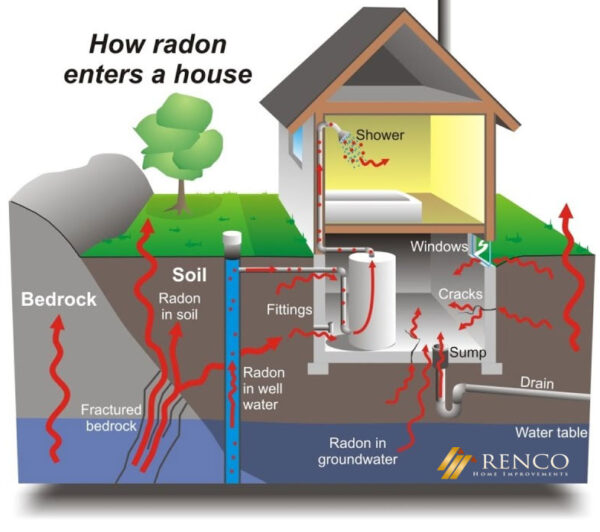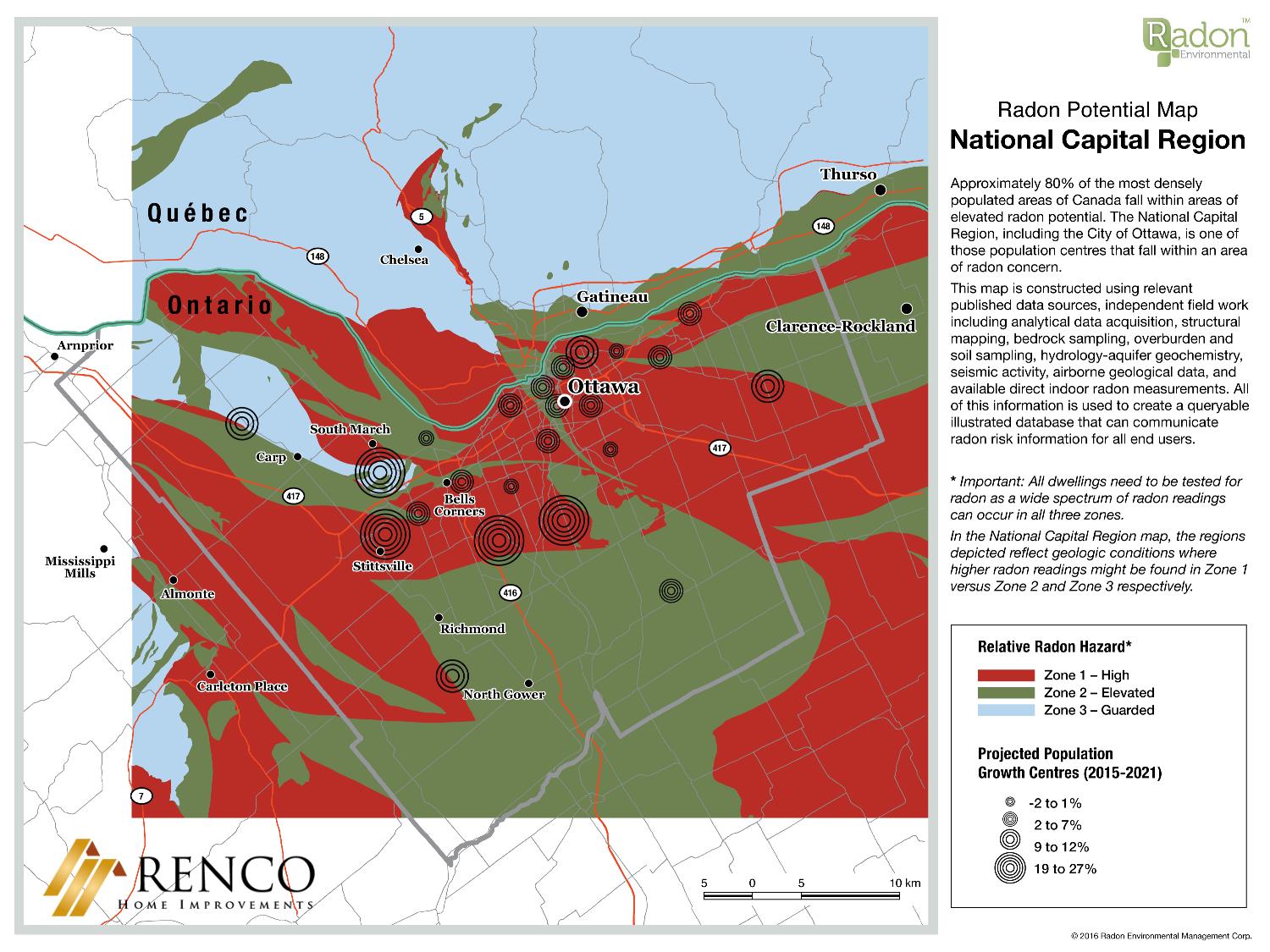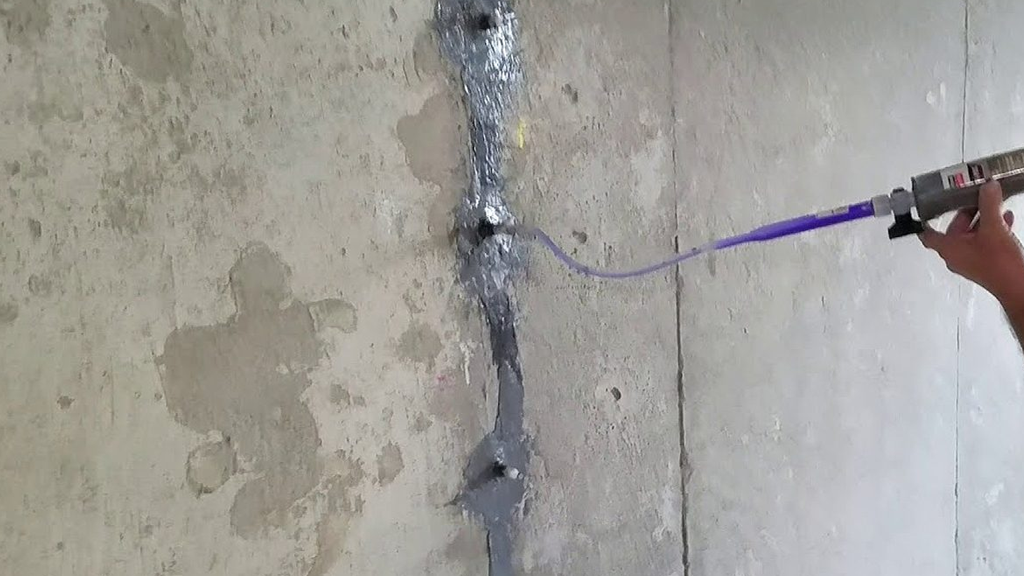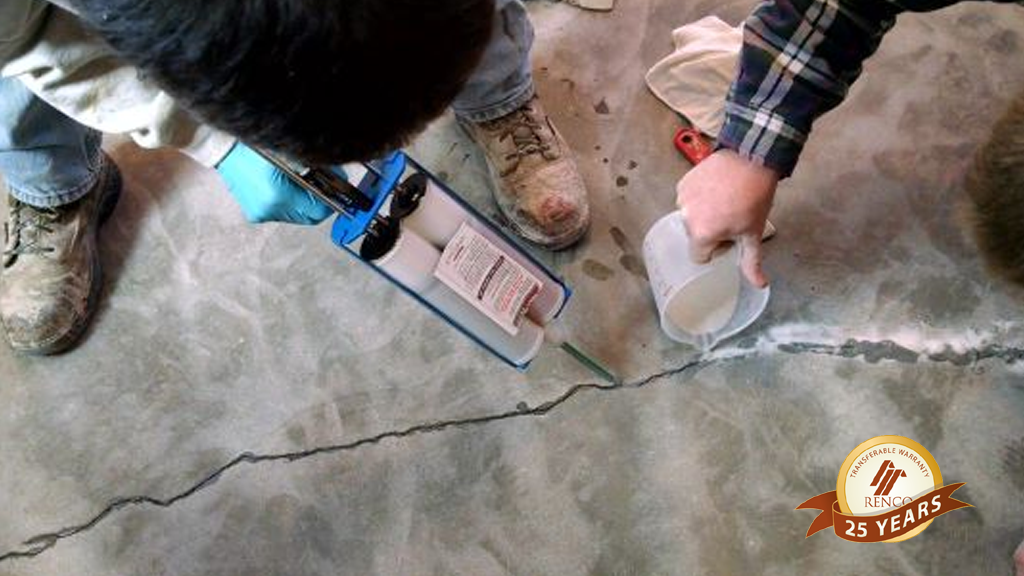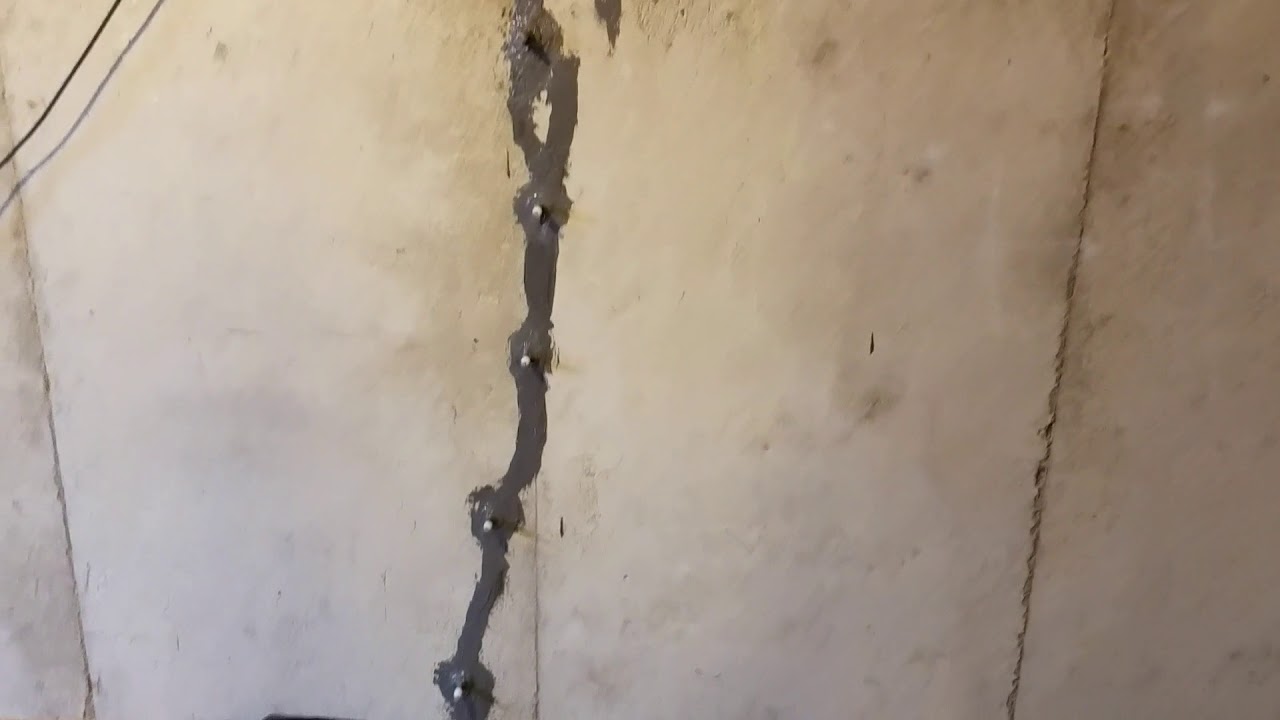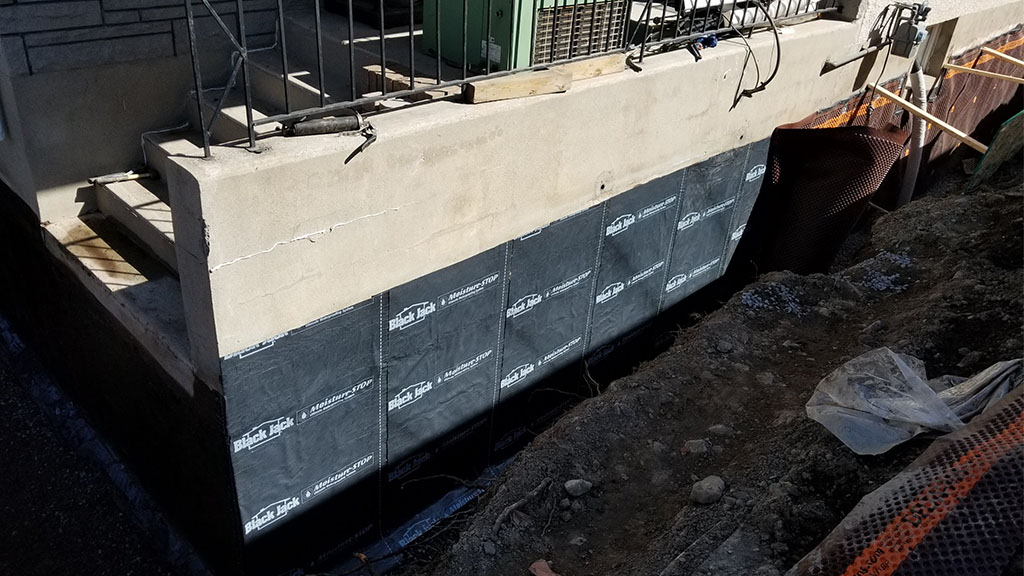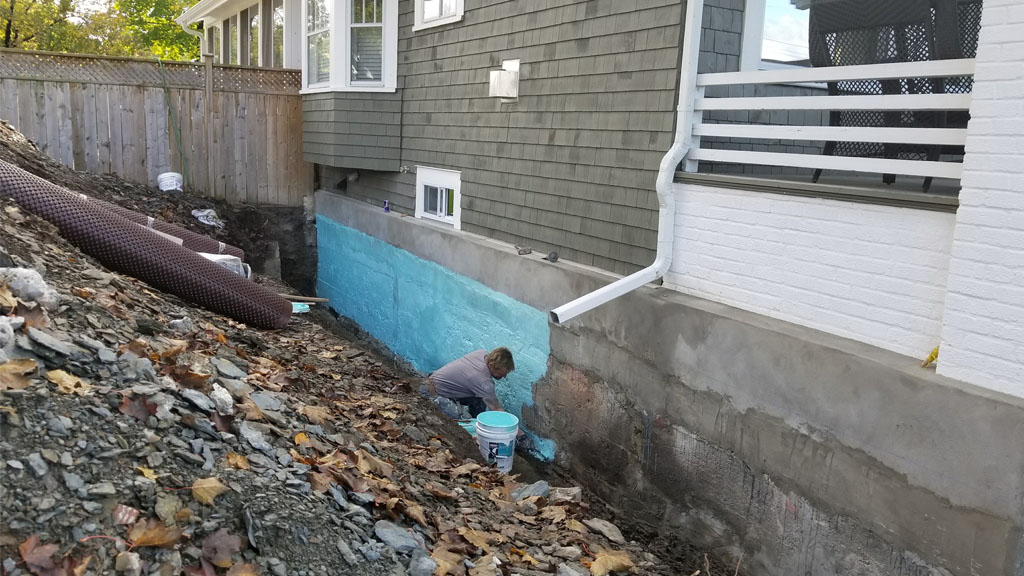Ottawa’s Professional Radon Testing & Venting Service
1 in 3 Ottawa homes have unsafe radon levels. That’s not a scare tactic – it’s geology.
Radon is a radioactive gas that seeps through your foundation. You can’t see it or smell it, but Health Canada says it’s the leading cause of lung cancer in non-smokers.
We’ve been testing Ottawa homes since 2001. We use Health Canada-certified methods, give you straight answers about your results, and back everything with a warranty-backed service we stand behind.
How it works: We start with a 7-day test. If levels are high, we run a second test to confirm. Then we walk you through your venting options and install a system that fixes the problem.
Why Radon Testing is Crucial in Ottawa
Ottawa’s geological makeup creates a significant radon exposure risk, depending on where you live. By educating yourself on Radon Gas and if you’re home is vulnerable, you can reduce the threat.
- Ottawa Geology Risk: The 2016 National Capital Region study confirms high radon potential across half of our city
- Foundation Entry Points: Ottawa homes vulnerable through basement cracks, sump pumps, and floor drains
- Undetectable Threat: No odor, color or taste – only professional testing reveals your home’s levels
- Ottawa Housing Stock: Both new builds and older homes throughout the city require testing
- Fast, Non-Intrusive Process: Our testing equipment works quietly in your home with minimal disruption
Radon Testing and Foundation Repair Projects
Since 2002, we have professionally repaired over 250+ foundation cracks for Ottawa homeowners. All of our foundation crack repairs, including radon testing and remediation, come backed by a transferrable warranty. When you spot a problem and contact Renco, you deal directly with Renco owner, Terry Fraser, who provides professional advice. Photos of recent projects below:
Foundation Crack Repair Projects
Since 2002, we have professionally repaired over 250+ foundation cracks for Ottawa homeowners. All of our foundation crack repairs come backed by a 25-year transferrable warranty. When you spot a problem and contact Renco you deal directly with Renco owner, Terry Fraser who provides advice and foundation repair options. Review some of our foundation repair projects below:
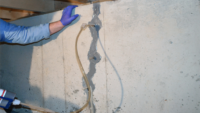

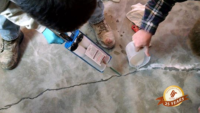
Radon Gas in Ottawa – Frequently Asked Questions
Get answers to Ottawa homeowners’ most pressing radon questions, from local risk factors to testing procedures and mitigation options.
Below is our four-step process for accurate radon gas testing.
1. Site Inspection We come out and check your foundation for cracks, gaps around pipes – all the places radon sneaks in. Our team’s got 25 years experience, we know what to look for.
2. 7-Day Testing We leave professional detectors in your home for exactly 7 days. Not 2 days, not 5 – has to be 7. Radon levels bounce around with weather and seasons, so you need a full week to get real numbers.
3. Results Review We go over your readings together. If they’re safe, you’re done. If they’re high, we talk about what needs fixing – no scare tactics, just straight facts.
4. Fix & Retest (if needed) Start with the basics – seal cracks and gaps where radon enters. Then we test another 7 days to prove it worked. Most problems get solved this way before needing fancy systems.
Timeline: 2 weeks for testing only, 3-4 weeks if mitigation work is needed.
Bottom line – Renco tests it right, fixes what actually needs fixing, and verifies the work.
Yes, Tarion new home warranty includes seven-year coverage for radon remediation when levels exceed Health Canada’s threshold of 200 Bq/m³. This vital consumer protection recognizes radon as a “major structural defect” under environmentally harmful substances or hazards, providing Ottawa homeowners with an important safety net.
To access this coverage, homeowners must first conduct proper long-term testing (minimum three months) to document the elevated levels before making a claim. Tarion’s coverage can save homeowners thousands of dollars in remediation costs if elevated levels are found. This warranty protection reflects the growing recognition of radon as a significant health concern in Ottawa’s housing market. It provides an additional reason to test new homes despite their built-in radon-resistant features.
Source:
Tarion.com – Home your new home warranty protects against randon gas
Radon enters Ottawa homes primarily through the foundation, where the building contacts the soil. According to Health Canada and City of Ottawa documentation, radon can seep into buildings through dirt floors, cracks in foundations or concrete, sump pumps, joints, and basement drains. In some cases, well water can also contain trapped radon, which may be released into the air when water is drawn.
A pressure differential drives the process—homes typically operate at slightly lower pressure than the surrounding soil, drawing radon gas inside. This “stack effect” is powerful in Ottawa’s climate, where heated homes in colder months create stronger upward air movement that pulls soil gases inside. Once radon enters, it can accumulate to dangerous levels, especially in lower, less ventilated home areas like basements.
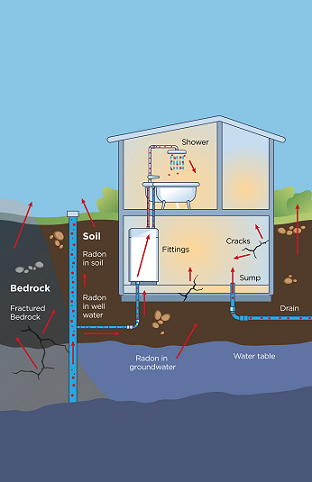
Image: Health Canada, Randon and Home Health Report
Source:
New homes built in Ottawa under the Ontario Building Code require three specific radon mitigation measures: installation of a soil gas barrier, rough-in for a subfloor depressurization system, and installation of a whole-house ventilation system (typically an HRV or ERV). These requirements apply to all new low-rise residential and small building construction, including additions.
However, these code-required measures don’t guarantee low radon levels—they’re designed to make future mitigation easier if needed. The soil gas barrier consists of polyethylene sheeting with lapped joints, the rough-in includes a perforated pipe below the air barrier system, and the ventilation system helps dilute indoor air. Despite these protections, Health Canada and building officials still recommend testing all homes, as actual radon levels can only be determined through proper measurement.
Source:
Radon is a significant concern in Ottawa, with geological studies confirming high radon potential across approximately half the city. The 2016 National Capital Region study by Radon Environmental Management identified that the City of Ottawa has relatively high radon potential covering about half of its area.
This elevated risk is due to Ottawa’s unique geological makeup, particularly areas overlying the Billings Formation, Eastview member of the Lindsay Formation, and parts of the Bobcaygeon Formation. Health Canada’s cross-country survey confirms that about 10% of homes nationally will test above the radon guideline, but local geology can significantly increase this percentage in specific regions like Ottawa.
Resources:
1) Canadian Geoscience Education Network (CGEN) – Ottawa-Gatineau Randon map
2) Ottawa Public Health – Randon in Your Home information guide

